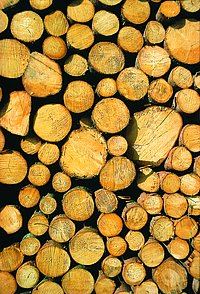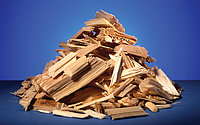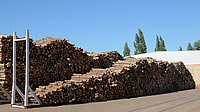The forest: The paper industry is far from sawing off the branch it is sitting on
Wood is indispensable as a raw material for paper manufacture. The paper industry is far from sawing off the branch it is sitting on. It takes a vital interest in a sustainable forestry management to safeguard the availability of its principal resource also in the future.
This concept ensures that three to four new trees are planted in place of every single tree that has been felled – an approach which jeopardizes the forest ecosystem not more than absolutely necessary. The paper industry is a comparatively minor beneficiary of the forest: only approx. 20 % of the worldwide wood harvest goes into pulp and paper production.
In Europe, raw material supplies have for centuries come from commercial forests. Today practically all of the remaining old-growth forests are protected as a nature reserve. Germany can look back on more than 200 years of sustainable forest management.
Even in countries with extensive natural forestry resources such as Russia or Canada, annual logging utilizes just a mere fraction of the annual growth of timber. The paper industry procures additional raw material from timber plantations in Spain and Portugal or from South America. For these woodlands, no deforestation of virgin forests has taken place. Instead they were raised on former agricultural areas that had lost their productivity.
For documentation purposes, the paper industry proactively assists the certification of sustainable forest management. This enables both customers and consumers to verify forest protection. The German paper industry is a member of the two big certification schemes, the 'Programme for the Endorsement of Forest Certification Schemes' (PEFC) and the 'Forest Stewardship Council' (FSC).
The European paper industry on its part is strictly adhering to the rules of the European Timber Trade Regulation which prohibits imports of wood and wood pulp from illegal logging.


